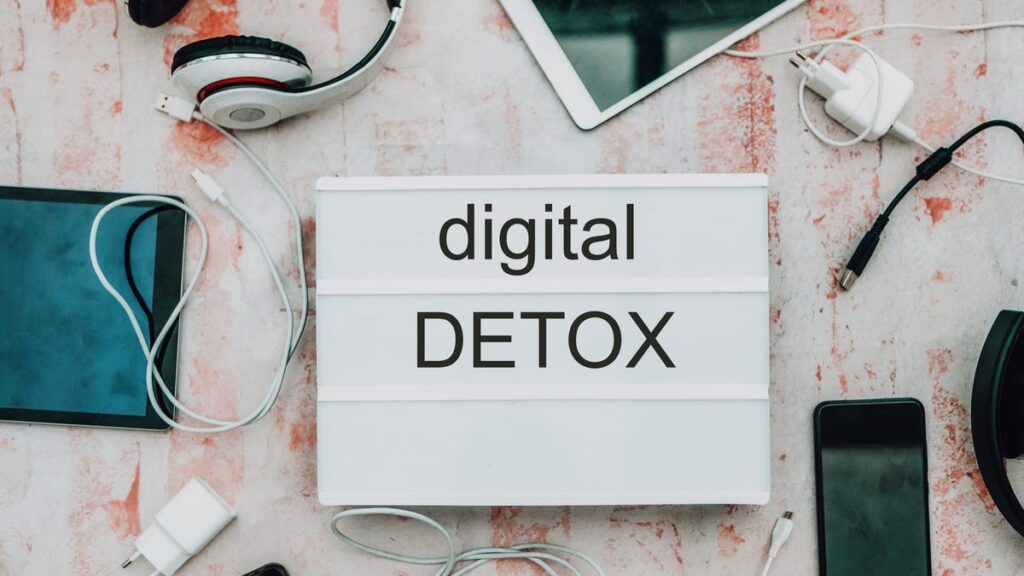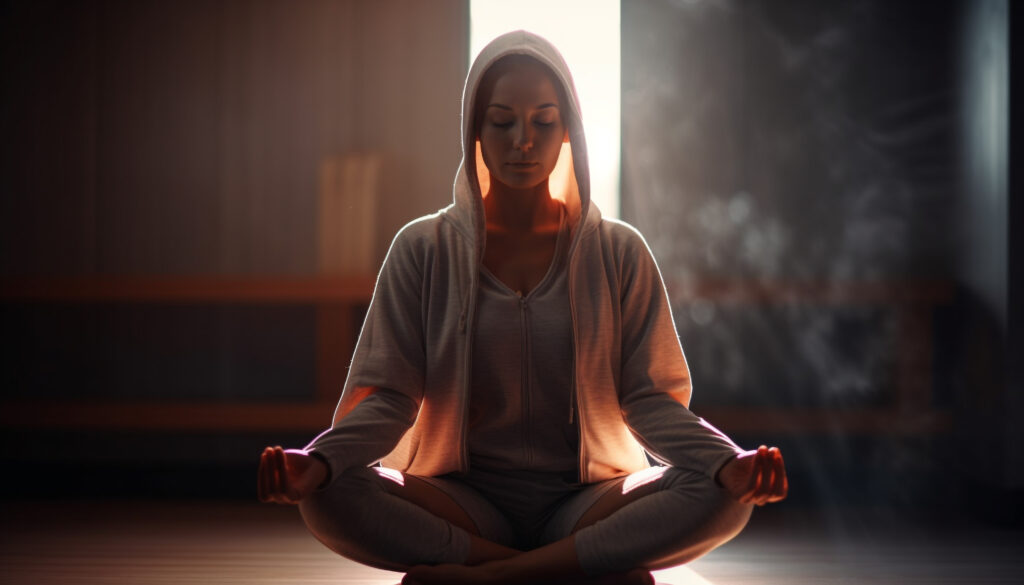
In today’s fast-paced and interconnected world, digital devices have become an integral part of our daily lives. From the moment we wake up until we go to bed, our digital devices are always within arm’s reach. From smartphones to laptops, we rely on these gadgets for communication, entertainment, work, and even relaxation. While technology has undoubtedly revolutionized our lives, the constant use of digital devices can take a toll on our mental and physical well-being. It can lead to issues like digital addiction, poor sleep quality, and increased stress. That’s where digital detox comes in.
In this comprehensive article, we’ll discuss 7 effective strategies for a digital detox. We’ll also discuss how to keep the balance after a digital detox, the methods to incorporate digital detox into your routine, and the tools and apps that can help you in digital detox.
What is a Digital Detox?
A digital detox is a deliberate period when you disconnect from your devices and take a break from the virtual world. It involves taking a break from digital devices to reduce screen time and reconnect with the world around us. It allows you to recharge, reconnect with yourself and others, and regain control over your digital habits. By consciously unplugging, you can create space for personal growth, increased productivity, and overall well-being.
Negative Effects of Constant Digital Connection
A constant digital connection with your devices can harm your physical, mental, and emotional health. Spending excessive time on screens can lead to:
- Eye strain
- Poor posture
- Disrupted sleep patterns
The constant barrage of notifications and information overload can also contribute to:
- Stress
- Anxiety
- Decreased attention span
Moreover, the endless scrolling and comparison on social media platforms can negatively impact our self-esteem and mental well-being. It’s easy to fall into the trap of comparing our lives to the highlight reels of others, leading to feelings of inadequacy and dissatisfaction.
Also Read: 6 Effective Strategies of How to Cope with Holiday Stress and Depression
How to Prepare for a Digital Detox?
Before embarking on a digital detox, preparing yourself for the experience you would get is essential. You can prepare yourself by following these steps:
- Set Your Goals – – Set clear goals and intentions for your digital detox. What do you hope to achieve during this time? What activities or hobbies would you like to pursue? By defining your purpose, you will be more motivated to stick to your detox plan.
- Inform Others – Next, inform your friends, family, and colleagues about your upcoming digital detox. Let them know you will be unreachable during this time and provide them with alternative ways to reach you in emergencies. It will help manage expectations and prevent unnecessary stress.
- Setting Boundaries – Another crucial step in preparing for a digital detox is setting boundaries with your devices. Create designated “tech-free zones” in your home. These can be your bedroom or dining area, where you are not allowed to use your devices. Establishing these physical boundaries will help reinforce your commitment to disconnecting.

7 Effective Strategies for a Successful Digital Detox
These are the seven strategies you can follow for a successful digital detox:
Set a Time Limit
Start digital detox by gradually reducing your screen time leading up to your detox. You can set specific time limits for activities like checking email or scrolling through social media. Use apps or built-in features to track and limit your usage.
Create a Schedule
Plan out your day and allocate specific times for different activities. It will help you focus and prevent mindless scrolling on your digital device. Prioritize activities that nourish your mind and body, such as reading, exercising, or spending time in nature.
Engage in Offline Activities
Rediscover hobbies and activities that you enjoy offline. It could be anything from painting, playing a musical instrument, or cooking a new recipe. Engaging in these activities will help distract you from your devices and provide a sense of fulfillment and joy.
Practice Mindfulness
Use your detox period to cultivate mindfulness and present-moment awareness. Engage in activities like meditation, deep breathing exercises, or journaling to connect with your inner self and gain clarity. It will help you develop a healthier relationship with technology moving forward.
Explore the Outdoors
Spending time in nature has numerous benefits for your well-being. Take advantage of your digital detox to explore the outdoors. It can be hiking, having a picnic in the park, or simply taking a leisurely stroll. Disconnecting from technology and immersing yourself in nature can be incredibly rejuvenating and healthy.
Connect with Your Loved Ones
Use this time to strengthen your relationships with family and friends. Plan activities together, such as board game nights, cooking meals, or having meaningful conversations. By nurturing these connections, you will feel more fulfilled and supported in your digital detox journey.
Practice Self-Care
Prioritize self-care activities during your digital detox. It could include indulging in a relaxing bath, practicing yoga or meditation, or treating yourself to a spa day. Taking care of your physical and mental well-being will help you recharge and approach technology with a healthier mindset.
How to Maintain a Healthy Digital Balance After a Detox?
Once you complete your digital detox, it is essential to maintain a healthy digital balance moving forward. The strategies that can help you in this digital balance include:
- Set Boundaries – Clearly define your limits when regarding technology and digital usage. Establish designated “tech-free” times or days when you disconnect from your devices during the week. Stick to these boundaries daily. Also, communicate these boundaries to those around you.
- Practice Mindful Tech Usage – Be intentional about how you use technology. Before reaching for your phone or opening a social media app, ask yourself if it aligns with your goals and values. Use your devices as tools for productivity and connection rather than mindless scrolling on social media.
- Establish a Bedtime Routine – Create a bedtime routine that excludes screens. Engage in relaxing activities such as reading a book, practicing meditation, or journaling before bed. It will help you unwind and improve the quality of your sleep.
- Practice Digital Decluttering – Decluttering refers to removing unnecessary items from an overcrowded space. Regularly declutter your digital devices by organizing files, deleting unused apps, and unsubscribing from unnecessary newsletters. It will free up storage space and create a sense of digital order and clarity.
- Engage in Regular Digital Detoxes – Make digital detoxes a regular routine. Set aside dedicated periods where you disconnect from technology and focus on activities that bring you joy and fulfillment.
How to Incorporate Digital Detox into Your Routine?
If you want to make digital detox a sustainable practice, it’s essential to incorporate it into your daily routine. Here are some strategies you can follow to incorporate digital detox a part of your daily routine:
- Start Small – Always begin by setting aside short periods each day for a digital detox. This period could be as little as 15 minutes or as long as an hour. Use this time to engage in activities that bring you joy and allow you to disconnect from technology.
- Create Tech-Free Zones – Tech-free zones in your house or living rooms have proven crucial in digital detox. Designate specific areas in your home or workplace where technology is not allowed. It could be your bedroom, dining area, or a quiet corner in your living room. Having physical spaces free from screens and technology will help you establish healthy boundaries.
- Practice Digital Mindfulness – Be mindful of your digital habits throughout the day. Notice when you’re reaching for your phone out of habit or boredom and pause before engaging with it. This moment of mindfulness will allow you to make conscious choices about your tech usage.
- Use Technology Intentionally – Reduce your tech usage unintentionally. Instead of mindlessly scrolling through social media, use your devices with proper intention. Set specific goals for your tech usage and prioritize activities that align with your values and aspirations.
Tools and Apps to Help with Digital Detox
In this digital age, numerous tools and apps are available to assist you in your digital detox journey. Here are a few recommendations to follow:
Forest – This app helps you stay focused by planting virtual trees while avoiding your phone or other digital devices. The longer you resist the temptation to use your device, the more your virtual forest grows.
To Download the Forest App: Click here
Freedom – It is a website blocker that allows you to block distracting websites and apps for a specific period. It helps you stay productive and focused on the task at hand.
To get Freedom: Click here
Moment – It is an app that tracks your screen time and provides insights into your digital habits. Moment sends you notifications when you’ve reached your limit and encourages you to take breaks from your digital devices.
To Download the Moment App: Click here
HeadSpace – It is a meditation app that offers guided meditation sessions to help you relax, reduce stress, and improve your overall well-being. HeadSpace is a great tool to incorporate mindfulness into your digital detox.
To Download Headspace App: Click here
Final Thoughts
A digital detox can be a transformative experience that allows you to break free from the digital treadmill and reclaim control over your life. By implementing these seven effective strategies—setting clear boundaries, prioritizing offline activities, practicing mindfulness, creating tech-free zones, establishing digital-free rituals, setting realistic goals, and seeking support—you can confidently embark on a journey toward digital well-being. By consciously unplugging from your digital devices, you can regain control over your digital habits, improve your focus and productivity, and foster stronger connections with yourself and others. So, what are you waiting for? Start your digital detox today and rediscover the joys of living in the present moment!
FAQs: 7 Effective Strategies for a Digital Detox
Q.1: What are the benefits of a digital detox?
Benefits of a digital detox include improved mental and physical health, enhanced relationships, increased productivity and creativity, better sleep, and a greater appreciation for the world around you.
Q.2: Why should I consider a digital detox?
You should consider a digital detox if you feel overwhelmed by constant notifications, feel addicted to checking your devices, experience eye strain or poor sleep, or find that digital distractions hinder your productivity and real-world relationships.
Q.3: How long should a digital detox last?
The duration of a digital detox can vary based on individual needs. It can range from a few hours each day (such as during family meals or before bedtime) to a week-long break or more. Start with a manageable time frame and adjust based on your experiences and goals.
Q.4: Can I do a digital detox while still using my phone or computer for work?
Yes, a digital detox can be customized to your lifestyle. It might mean setting specific boundaries like not checking emails after work hours, avoiding social media during the day, or using apps only for essential tasks. The key is to reduce unnecessary digital consumption.
Q.5: What are some signs that I might need a digital detox?
Signs that you might need a digital detox include feeling anxious or stressed when away from your devices, difficulty concentrating, decreased physical activity, reduced face-to-face interactions, and disrupted sleep patterns.
Q.6: Can I do a digital detox if my job requires me to be online?
Yes, you can still participate in a digital detox even if your job requires online presence. The approach here is to set clear boundaries. Allocate specific times for checking emails and social media, and stick to them. Inform your colleagues and clients about your detox schedule to manage expectations. Use this time to focus on offline tasks and ensure your online time is productive and limited to work-related activities.
Q.7: What activities can replace screen time during a digital detox?
Activities that can replace screen time include reading, meditating, engaging in outdoor activities, spending quality time with friends and family, exploring hobbies, and practicing mindfulness or relaxation techniques.
Q.8: How can I reduce the temptation to use my devices during a detox?
Reduce temptation by turning off non-essential notifications, deleting time-consuming apps, keeping your devices out of reach, especially during designated no-screen times, and using app blockers or digital well-being features to limit usage.
Q.9: What if I feel anxious without my devices?
Feeling anxious without your devices is a common reaction and signifies the importance of taking a break. Start with short periods of disconnection and gradually increase them as you become more comfortable. Engage in relaxing activities like reading, meditation, or walking to help manage your anxiety. Remember, it’s about balance, not elimination. The goal is to control your use of digital devices, not let them control you.
Q.10: How can I maintain the benefits of a digital detox in the long term?
Maintain the benefits by incorporating digital-free times into your daily routine, setting clear boundaries for device usage, continuing to engage in non-digital activities, and regularly assessing and adjusting your digital habits to ensure a healthy balance.

